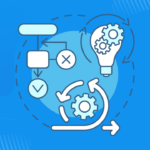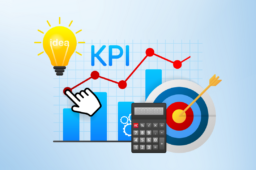
How to manage Software Development Project | A complete guide
- August 09, 2024
- by
- tehreem
Managing a software development project can feel like navigating through a maze—complex, unpredictable, and full of potential pitfalls. You might have experienced projects that went over budget, missed deadlines, or failed to meet the stakeholders’ expectations. These challenges often lead to frustration and stress, leaving you questioning how to do it right.
You’re not alone. Many project managers, whether new or seasoned, struggle with managing software development projects. The constant evolution of technology, coupled with the need for effective communication, resource management, and risk mitigation, can make even the most straightforward projects seem daunting.
But it doesn’t have to be that way. With the right strategies, tools, and a structured approach, you can manage your software development project efficiently and successfully. This complete guide will walk you through the essential steps and best practices to ensure your project not only meets but exceeds expectations.
Understanding the Basics of Software Development Project Management
Managing a software development project requires a clear understanding of its scope, the roles involved, and the methodologies that will be used. At its core, software development project management is about planning, executing, and delivering a software product that meets specific requirements within a set timeframe and budget.
Setting Clear Objectives and Requirements
One of the first steps in managing a software development project is setting clear objectives and requirements. This is crucial for guiding the team and ensuring everyone is aligned.
Defining Project Goals: Use the SMART criteria—Specific, Measurable, Achievable, Relevant, and Time-bound—to set clear objectives. For example, if your goal is to develop a mobile app, a SMART goal would be: “Develop a mobile app with five key features within six months, staying within a $50,000 budget.”
Gathering and Documenting Requirements: Engage stakeholders early to gather requirements. This includes understanding what the software should do (functional requirements) and how it should perform (non-functional requirements). Documenting these requirements helps prevent scope creep—a common challenge in software development projects.
Project Planning and Timeline Creation
With objectives and requirements in place, the next step is to create a detailed project plan and timeline. This involves breaking down the project into smaller tasks, estimating time and resources, and setting milestones.
Creating a Detailed Project Plan: Start by listing all the tasks that need to be completed. Then, estimate how long each task will take and assign resources accordingly. Use project management tools like Jira or Monday.com to organize tasks and track progress.
Timeline Creation: A well-structured timeline helps you monitor progress and make adjustments as needed. Be sure to build in some flexibility for unexpected delays. For example, if a task is expected to take two weeks, you might allocate an extra few days to account for potential challenges.
Resource Allocation and Staffing
Effective resource allocation is critical to the success of a software development project. This includes assigning the right people to the right tasks and ensuring they have the tools they need to succeed.
Balancing Workloads: It’s essential to balance workloads to prevent burnout and ensure that no team member is overloaded. Tools like Monday.com allow you to monitor team workloads and make adjustments as necessary.
Scheduling and Avoiding Resource Conflicts: Resource conflicts can occur when team members are assigned to multiple projects or tasks simultaneously. To avoid this, make sure that scheduling is done with a clear understanding of everyone’s availability.
Choosing the Right Development Methodology
Choosing the right development methodology is another critical aspect of software development project management. The methodology you choose will depend on the project’s requirements, the team’s expertise, and the stakeholders’ preferences.
Agile, Scrum, Waterfall, and Hybrid: Agile and Scrum are popular for their flexibility and adaptability, making them ideal for projects where requirements are likely to change. Waterfall, on the other hand, is more rigid and is best suited for projects with well-defined requirements. A Hybrid approach can be used when elements of both Agile and Waterfall are needed.
Effective Communication and Collaboration
Communication is key to the success of any project. In software development, it’s important to ensure that all team members are kept in the loop and that stakeholders are regularly updated.
Communication Tools and Platforms: Tools like Slack, Microsoft Teams, and Zoom are great for maintaining clear and constant communication. Regular updates, meetings, and feedback loops ensure that everyone is on the same page.
Encouraging a Collaborative Environment: Collaboration tools like Confluence or Google Workspace can be used to share documents, track changes, and ensure that everyone has access to the information they need.
Risk Management and Mitigation Strategies
Risk management involves identifying potential risks that could impact the project and developing strategies to mitigate those risks.
Identifying Potential Risks: Common risks in software development include scope creep, resource conflicts, and technological challenges. Identifying these risks early allows you to develop contingency plans.
Continuous Monitoring and Adjusting: Risk management is not a one-time task. It requires continuous monitoring and adjustment throughout the project lifecycle.
Testing and Quality Assurance
Testing is a crucial part of software development, ensuring that the product meets the required standards and functions as expected.
Continuous Testing: Implement continuous testing practices, including unit testing, integration testing, and system testing, throughout the development process. QA automation tools can help streamline this process.
Setting Up a Robust QA Process: A well-defined QA process helps catch bugs early and ensures that the final product is of high quality.
Implementation and Deployment
The implementation phase involves deploying the software to a live environment and providing ongoing support.
Ensuring a Smooth Deployment: This includes creating a deployment plan, training users, and monitoring the software post-launch to catch any issues early.
Post-Deployment Support and Maintenance: Even after the software is deployed, ongoing support and maintenance are essential to address any issues and ensure that the software continues to meet user needs.
Continuous Improvement and Post-Project Review
Once the project is complete, it’s important to review what went well and what could be improved.
Post-Project Analysis: Conducting a post-project analysis helps identify areas for improvement. This can include gathering feedback from stakeholders and team members.
Continuous Improvement Strategies: Use the insights gained from the post-project analysis to improve future projects.
Managing a software development project may be challenging, but with the right strategies, tools, and a structured approach, it’s entirely possible to deliver a successful project. Remember, the key lies in thorough planning, effective communication, and continuous improvement.
By following the steps outlined in this guide, you can confidently navigate the complexities of software development project management and achieve your project goals.
What are the common challenges in software development project management?
Common challenges include scope creep, resource conflicts, and managing changing requirements.
How do you handle scope creep in software projects?
Scope creep can be managed by clearly defining project requirements at the start and regularly reviewing them with stakeholders.
What tools are recommended for software project management?
Popular tools include ONtezo, Jira, Monday.com, and Slack, which help with task management, communication, and collaboration.







1 Comment
The Best Free Project Tracking Tools in 2024 - Ontezo Blogs
22nd Aug 2024 - 1:21 pm[…] How to manage Software Development Project | A complete guide […]